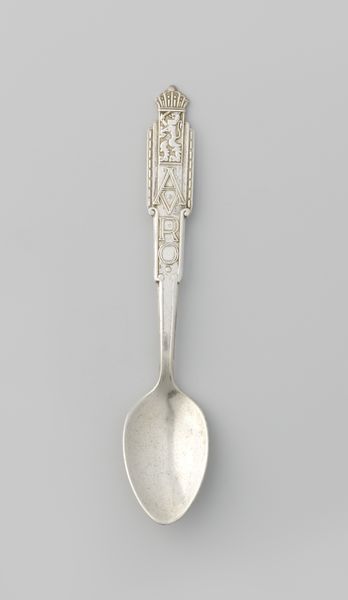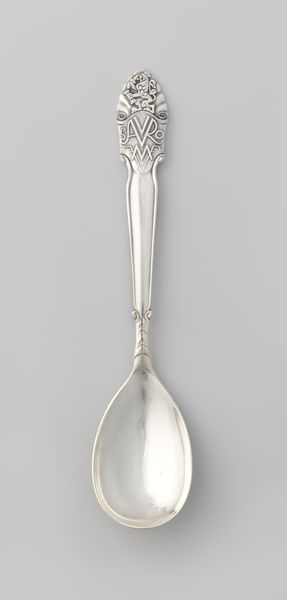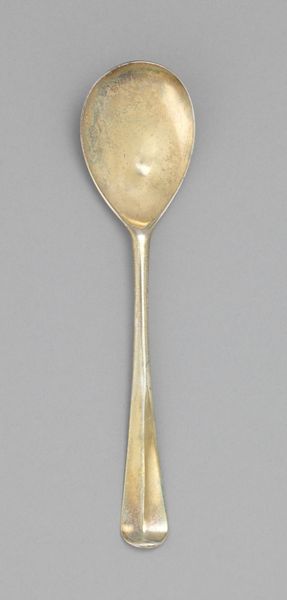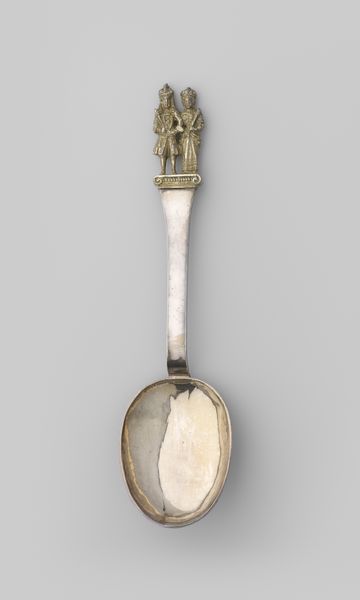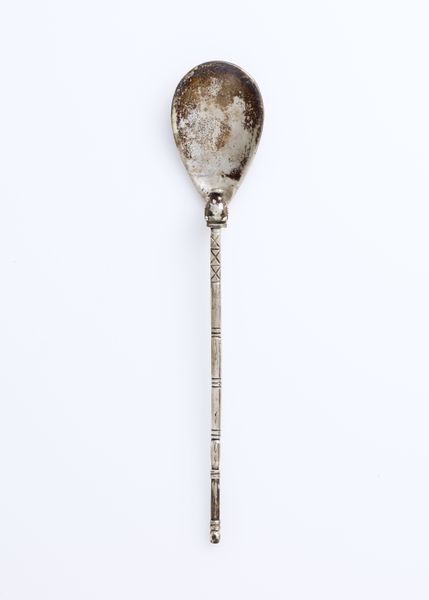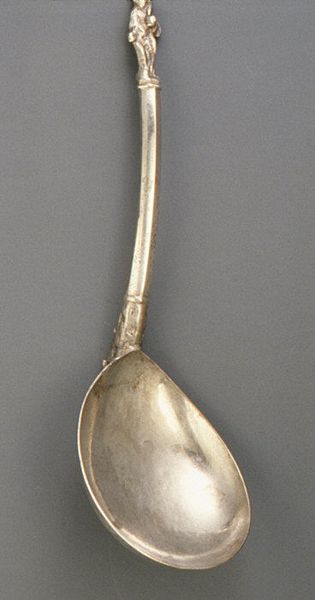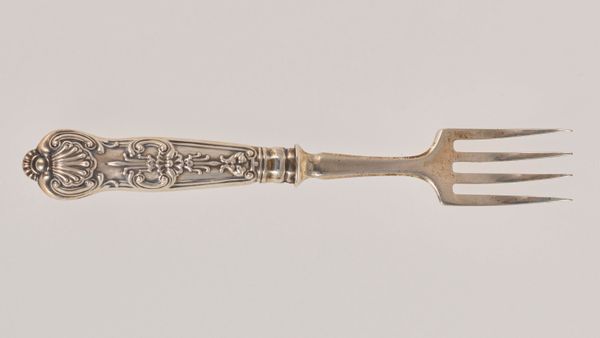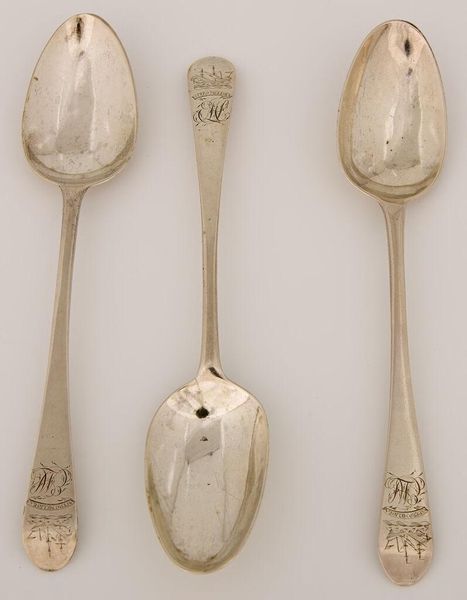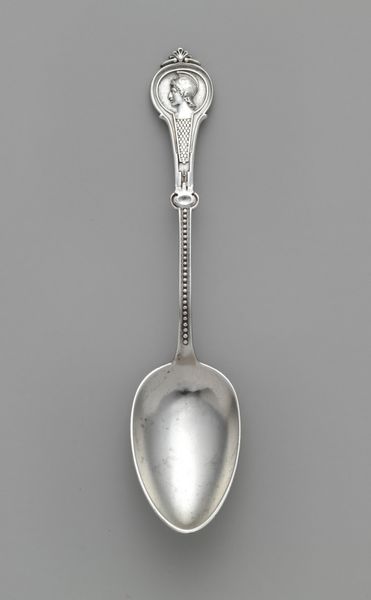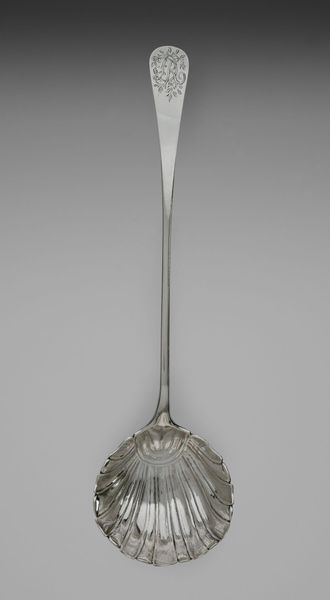
silver, metal, sculpture
#
silver
#
metal
#
sculpture
#
romanticism
#
decorative-art
Dimensions: Length: 4 3/8 in. (11.1 cm)
Copyright: Public Domain
Curator: Here we have a tea caddy spoon crafted by William Hamey between 1800 and 1815. It’s a beautiful example of decorative art in silver, currently residing at the Metropolitan Museum of Art. Editor: It's petite but immediately catches the eye. The piece exudes a quiet sophistication, perhaps because the reflective silver, combined with the intricate shell-like structure, evokes a sense of understated luxury. Curator: Absolutely. The shell motif is powerful. Throughout history, the shell has served as a symbol of pilgrimage, fertility, and even resurrection. Given its function as a tea scoop, the shell perhaps symbolizes the opening, offering, and partaking in the ritual of tea drinking. Editor: Interesting, but look at the execution. Notice how the fluted design isn't just a series of simple grooves. They possess depth and an almost organic variation that captures light in a subtle dance. I'm drawn to the interplay of light and shadow within its form. Curator: And below, an engraving featuring floral ornamentation, crowned by what seems to be perhaps a heraldic shield? All speak to refinement and societal status. Tea in this period wasn’t simply a drink but a social act, an expression of one's position. Editor: It's functional but transcends pure utility, becoming an objet d'art. Its scale is particularly noteworthy; such delicacy amplifies the impression that one would use it with intentional care, which echoes the values and manners associated with its time of origin. Curator: Indeed, think about the cultural significance. The spoon is small, yet it holds stories of trade, empire, social rituals, and artistry. It whispers tales of drawing-room conversations and far-off lands. It’s a microcosm reflecting grand narratives. Editor: Precisely. Analyzing the spoon reveals the level of the society’s material and symbolic vocabulary. It reveals so much more than its designated purpose: values and world views transmitted and upheld. Curator: Examining this piece made me more attuned to seeing echoes from history ingrained in our daily routines. We’ve only touched on the object's complexities and cultural legacy, I hope, it'll trigger others to notice how commonplace objects reveal history’s continuity. Editor: It also showcases that the careful observation of material culture and function can reveal complex and nuanced aspects of even ordinary interactions. I was wrong to dismiss this as only decorative, it embodies so much cultural history in microcosm.
Comments
No comments
Be the first to comment and join the conversation on the ultimate creative platform.


